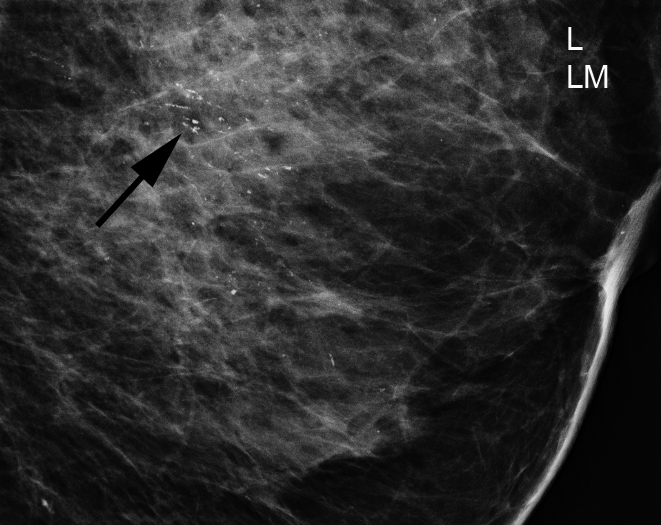Screening can detect aggressive breast cancer earlier

Her2neu positiv Referenzzentrum Mammographie am Universitätsklinikum Münster
Breast cancer is the most frequent form of cancer in women. The aim of systematic early detection is to reduce the number of deaths from breast cancer. This is why the mammography screening programme has been built up in Germany since 2005, with the aim of offering every woman between the ages of 50 and 69 quality-controlled screening for the early detection of breast cancer.
Methodology
With help from the North Rhine-Westphalian State Cancer Registry, evaluations were made of 53,375 examinations from the implementation phase of the screening, focusing on the detection of breast cancer in the screening process and at the end of the biennial interval after screenings in which nothing was detected.
From these data, detection rates through early detection mammography screening were established for invasive breast cancer, as well as during the subsequent biennial interval. Based on immunohistochemical examinations, the determination of hormone receptors and the HER2/neu status, subtypes were created with respect to tumour aggressiveness: HER2 positive and triple negative breast carcinomas were defined as being aggressive.
Results
A detailed analysis of aggressive breast cancer among hormone receptor negative and HER2 positive carcinomas shows detection rates which are six times higher – and among triple negative carcinomas twice as high – in the screening than after the biennial interval. Aggressive invasive breast carcinomas have the highest rate of diagnosis in screening among women in the 60-69 age group. The stage distribution of aggressive invasive breast carcinomas is better than after the interval.
According to the scientific analyses mammography screening evidently makes it possible to make diagnoses – also of aggressive subtypes – at an earlier stage. Women who are 60 or older contract breast cancer more often than those between the ages of 50 and 59. “These results provide further evidence that a systematic programme for the early detection of breast cancer makes sense,” says Prof. Walter Heindel from the Reference Centre for Mammography at Münster University Hospital.
PD Dr. med. Stefanie Weigel
Prof. Dr. med. Walter Heindel
Institut für Klinische Radiologie
Referenzzentrum Mammographie am Universitätsklinikum Münster
Universitätsklinikum Münster
Albert-Schweitzer-Campus 1 (Gebäude A1),
48149 Münster
Germany
Prange A, Bokhof B, Polzer P, Tio J, Radke, I, Heidinger O, Heindel W, Weigel S. Higher Detection Rates of Biologically Aggressive Breast Cancers in Mammography Screening than in the Biennial Interval. Fortschr Röntgenstr 2018; DOI:10.1055/a-0657-3970
Media Contact
More Information:
https://www.uni-muenster.de/All latest news from the category: Medical Engineering
The development of medical equipment, products and technical procedures is characterized by high research and development costs in a variety of fields related to the study of human medicine.
innovations-report provides informative and stimulating reports and articles on topics ranging from imaging processes, cell and tissue techniques, optical techniques, implants, orthopedic aids, clinical and medical office equipment, dialysis systems and x-ray/radiation monitoring devices to endoscopy, ultrasound, surgical techniques, and dental materials.
Newest articles

Superradiant atoms could push the boundaries of how precisely time can be measured
Superradiant atoms can help us measure time more precisely than ever. In a new study, researchers from the University of Copenhagen present a new method for measuring the time interval,…

Ion thermoelectric conversion devices for near room temperature
The electrode sheet of the thermoelectric device consists of ionic hydrogel, which is sandwiched between the electrodes to form, and the Prussian blue on the electrode undergoes a redox reaction…

Zap Energy achieves 37-million-degree temperatures in a compact device
New publication reports record electron temperatures for a small-scale, sheared-flow-stabilized Z-pinch fusion device. In the nine decades since humans first produced fusion reactions, only a few fusion technologies have demonstrated…





















